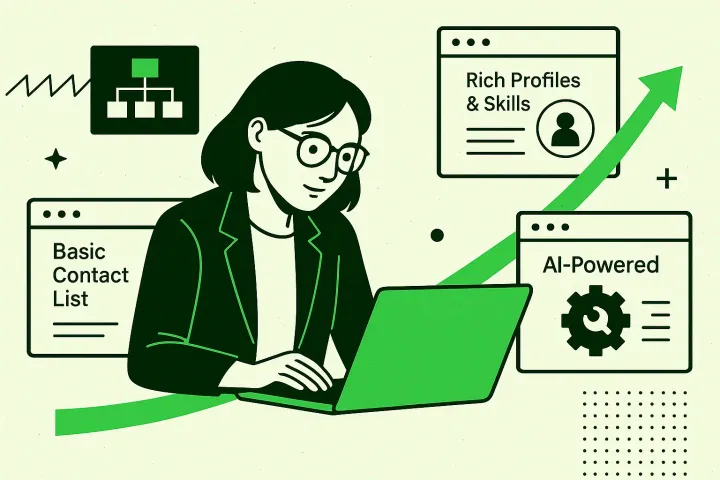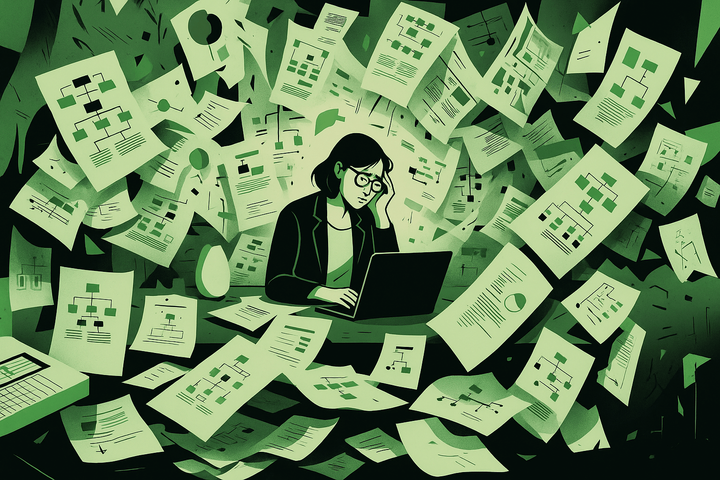The Rise of Decentralized Organizational Structures
Let's break down what decentralized organizations are, how they work, and why they are growing in popularity.

Decentralized organizational structures have become increasingly popular in recent years.
That's because they offer a number of advantages such as increased efficiency and employee autonomy. That is, if you can get it right.
So what exactly is a decentralized organizational structure and how is it different to its traditional counterpart, the centralized organizational structure?
Let's break down what decentralized organizations are, how they work, and why they are growing in popularity.
What is a Decentralized Organization Structure?
A decentralized organization is one in which decisions are made using a distributed network of nodes instead of a traditional top-down reporting hierarchy.
This means that individuals within the organization are empowered to make their own decisions, with input from other stakeholders.
The primary goal of decentralization is to create an environment where everyone feels empowered and connected to each other and the company's mission.

In recent years, decentralization has become increasingly popular as technology has advanced and digital transformation has taken hold. Organizations are realizing that by empowering employees to make their own decisions they can increase efficiency and reduce costs associated with hierarchical decision-making structures.
Additionally, decentralization allows for greater autonomy among employees which boosts job satisfaction and morale.
The Difference Between Centralized and Decentralized Organizational Structures
There are some important differences to consider when deciding between a centralized or decentralized organizational structure.
Centralized Organizational Structure
A centralized organizational structure relies mostly on top-down decision-making by the executive team. Top-level executives make decisions and communicate them to managers lower down the corporate hierarchy, who in turn implement those decisions.
This type of structure focuses on speed and control, since relatively few stakeholders are involved in the decision-making process and decisions can be made faster, particularly in smaller businesses.
The downside of this type of structure is that it can be rigid and inflexible because there are fewer people who can make decisions or suggest changes.
Decentralized Organizational Structure
In contrast, a decentralized organizational structure gives more decision-making power to employees lower down in the corporate hierarchy. This type of structure spreads decision-making authority across multiple employees or teams, who then communicate decisions upwards.
A decentralized corporate structure encourages innovation and creativity by allowing employees from different departments to work together to solve problems, without needing approval from upper-management for decisions.
Benefits of Decentralizing an Organization
Decentralization is a process where the hierarchical structure of an organization is deconstructed and authority transferred to different levels within a company.
This means that decision-making power is no longer held by just a few people at the top, but instead, is distributed across more people in the organization.
Let’s take a look at some of the benefits of decentralization.
More Efficient Decision Making
Decentralization can lead to more efficient decision-making in certain circumstances, since not all decisions have to go through several layers of approval before they can be implemented.
As more decisions are made closer to the source, this helps organizations respond faster to changes in their environment. Additionally, decentralization allows for better accountability because those who make decisions are ultimately responsible for them.
Increased Innovation
Decentralization encourages innovation by giving employees more freedom and autonomy, which allows them to come up with creative solutions and new ideas without having to wait for approval from managers and executives higher-up in the chain of command.
Additionally, decentralization can help foster collaboration between departments as different teams are given the opportunity to work together on projects or initiatives that can benefit the organization as a whole.
Flexibility
Organizations that embrace decentralization typically have an easier time adapting to change, since they aren’t dependent on one person or group making all the decisions. Having different decision makers at various levels within your organization gives you the ability to quickly adjust your strategies and operations in order to stay competitive.
Additionally, the flexibility of a decentralized structure enables your organization to create powerful team-based structures such as tiger teams, and it makes it easier to implement dotted line reporting.

Improved Customer Focus
If you're a large business that deals with customers directly through a number of offices or branches, such as for example a retail chain, a decentralized structure can help your organization build stronger relationships with your customers. By making it easier for your employees to make certain decisions "on site" without having to wait for approval from higher management, they are able to better serve your customers on the spot.
Downsides of Decentralized Organizations
Decentralizing an organization can be a great way to streamline processes and reduce costs. But, it's important to understand that decentralization isn't the right choice for every organization.
Now let's take a look at some of the challenges associated with decentralizing an organization.
Loss of Control and Oversight
One of the biggest downsides of decentralizing your organization is that it can lead to a loss of control and oversight. When decision-making authority is spread throughout multiple teams and departments, it can become difficult to ensure that everyone is on the same page and following company protocols.
A lack of oversight can lead to confusion, miscommunication, and even costly mistakes and that's why it's important to have well-defined processes in place before decentralizing any aspect of your operations.
Increased Risk & Liability
Decentralizing also increases risk and liability. When decisions are made by multiple people or departments instead of a centralized authority, there is more room for error and more potential for disputes between parties involved in a project or transaction.
It also means that there may not be one particular individual or team that is ultimately responsible for mistakes, as responsibility will have been spread out among several people or departments.
Communication Challenges
The lack of centralization inherent in decentralized organizations can also create communication challenges between teams or departments. Keeping everyone on the same page when it comes to projects and deadlines can be difficult when there is no central point from which information flows.
Additionally, when communication systems are not standardized across all offices and departments within an organization, this can lead to further confusion and possible delays with projects being completed on time.
How Remote and Hybrid Work Has Accelerated the Use of Decentralized Structures
The recent shift to a more distributed workforce has had a big impact on how organizations are structured.
Remote work has accelerated the adoption of the decentralized organizational structure since it allows people to collaborate remotely while still being empowered with decision-making authority. Now, teams no longer have to rely on physical meetings to share information and make decisions, and the decentralized organizational structure is a viable option for companies embracing remote work.
One reason for this is that advances in digital workplace tools have made it far easier for companies to implement a decentralized structure even if they are hybrid or remote.
Cloud-based technologies such as Slack, Zoom, Dropbox, and of course OneDirectory make it easy for employees to connect and collaborate with each other regardless of their physical location. Since these tools allow every employee to collaborate in real-time, regardless of their location, companies no longer need to worry that decision-making might be hindered.



